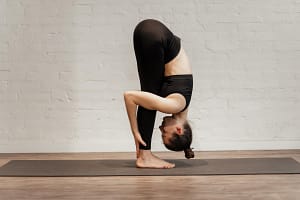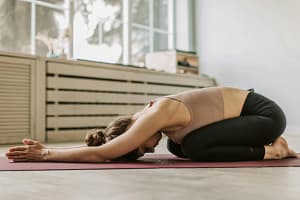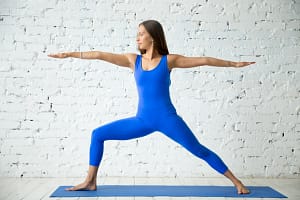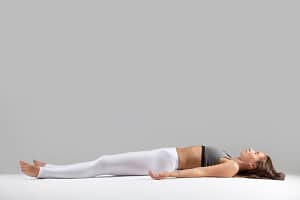Key Points
- Somatic yoga combines traditional poses with internal body awareness.
- Benefits include improved flexibility, stress reduction, and mind-body connection.
- It differs from traditional yoga by focusing on personal exploration and intuition.
- Key principles involve mindful movement, breath awareness, and tension release.
- Practice involves creating a safe space and incorporating basic poses daily.
Are you looking to reconnect with your body, cultivate inner strength? Try out somatic yoga. This unique practice combines traditional yoga postures with a focus on internal body awareness and movement. Somatic yoga emphasizes the mind-body connection, promoting relaxation and mindfulness through gentle movements and breathwork.
By incorporating somatic yoga into your routine, you can release tension, reduce stress, and enhance your flexibility and mobility. Whether you are a seasoned yogi or a beginner, somatic yoga offers to strengthen the mind-body connection. Look no further than somatic yoga. This transformative practice combines traditional yoga poses with somatic therapy techniques to help release tension, improve posture, and alleviate chronic pain. By focusing on mindful movement and breath work, somatic yoga offers a unique opportunity to cultivate self-awareness and promote healing from within. Somatic yoga can give you transformation. Experience that allows you to tap into your body’s innate wisdom and healing abilities. Say goodbye to stiffness and hello to a more vibrant and energetic self with the power of somatic yoga.

Brief overview of the benefits of somatic yoga
Somatic yoga focuses on the internal experience of the body, emphasizing awareness and mindfulness in movement. Some benefits of somatic yoga include improved body awareness, enhanced flexibility, increased relaxation and stress relief, improved posture, and a deeper connection to the present moment. Somatic yoga can also help to release tension and chronic pain, improve coordination and balance, and promote overall well-being and vitality.
Some benefits of somatic yoga include:
⇒Note: Hatha yoga: Breathing techniques are coordinated with body movements
1. Improved body awareness: Somatic yoga helps individuals tune into their body and become more aware of their sensations, movements, and patterns of tension.
2. Release tension and reduce pain: By using slow and gentle movements, somatic yoga helps release tight muscles, reduce pain, and improve flexibility.
3. Improve relaxation: Somatic yoga practices include deep breathing techniques and mindfulness, promoting relaxation and reducing stress.
4. Improve posture and alignment: Somatic yoga helps improve posture by increasing body awareness and promoting proper alignment.
5. Increase energy and vitality: By releasing tension and improving circulation, somatic yoga can boost energy levels and contribute to overall vitality.
6. Help with mind-body connection: Somatic yoga encourages a deeper connection between the mind and body, promoting overall health and inner harmony.
⇒Note: Restorative yoga: benefits and 5 basic restorative yoga poses
How somatic yoga differs from traditional yoga practices
Somatic yoga focuses on the internal experience of the body and movement, whereas traditional yoga practices often focus on achieving specific physical poses or postures.
Somatic yoga places emphasis on mindful movement, breath awareness, and the connection between the body and mind, whereas traditional yoga practices may prioritize physical alignment, strength, and flexibility.
Somatic yoga encourages you to explore and listen to your bodies, moving in a way that feels good and promotes self-awareness and healing, whereas traditional yoga practices may involve more structured sequences and repetitive asanas.
Somatic yoga often incorporates sensory awareness, visualization, and subtle movement practices to release tension and improve mobility, whereas traditional yoga practices may focus more on holding static poses and achieving physical goals.
Overall, somatic yoga offers a more personalized and intuitive approach to movement and self-care, whereas traditional yoga practices may be more structured and goal oriented.

Key principles and techniques of somatic yoga
⇒Note: Vinyasa Yoga: ideal for those who do not have too much time
1.Body Awareness: Somatic yoga focuses on developing a deep awareness of the body and the sensations within it. Yogis are encouraged to pay close attention to how different movements feel and to listen to the body’s signals.
2. Slow, Mindful Movement: Somatic yoga includes slow, deliberate movements to help you to connect with your bodies and release tension. It emphasizes quality of movement over quantity, encouraging to move with awareness and intention.
3. Breath Awareness: Mindful breathing is an integral part of somatic yoga practice. You are encouraged to synchronize your breath with movements to increase relaxation and promote greater body awareness.
4. Proprioception: Somatic yoga focuses on developing proprioception, or the body’s ability to sense its own position in space. Through somatic practices, you can improve your body awareness and reduce the risk of injury.
5. Embodied Mindfulness: You are encouraged to develop embodied consciousness through somatic yoga, staying present and aware of your body throughout the practice. This can help reduce stress and promote relaxation.
6. Gentle, Fluid Movements: Somatic yoga emphasizes gentle, fluid movements that aim to release tension and improve flexibility. You are guided to move in a way that feels comfortable and natural for your bodies.
7. Release of Tension: Somatic yoga techniques help release muscular tension and improve overall body alignment. By focusing on relaxation and awareness, you can release physical and emotional stress stored in the body.
8. Mind-Body Connection: Somatic yoga aims to strengthen the mind-body connection, promoting a sense of unity and integration between the physical and mental aspects of the self. Through somatic practices, you can develop a deeper understanding of your bodies and cultivate greater self-awareness.
The Benefits of Somatic Yoga
⇒Note: Hatha and Vinyasa yoga – what are the differences and which one is best for you?
Improved mind-body connection
An improved mind-body connection is essential for overall health and mental well-being. By incorporating somatic exercises and yoga classes into your fitness regime, you can enhance your mind-body connection and reduce the risk of physical injury. Listen to your body during somatic exercises for weight loss, especially if you have back pain or lower back issues.
Participate in hour-long sessions of yoga flow to re-educate your nervous system and improve your body movement. Whether you are a beginner or an advanced practitioner, yoga teacher can help you develop a deeper understanding of somatic release and mental well-being. Embrace the possibility of therapeutic healing through forms of somatic practices such as hamstring stretches, and somatic movements done on the floor.
Increased body awareness and mindfulness
Increased body awareness and mindfulness are essential for maintaining physical and mental well-being. With a low impact and safe form of movement, even beginners can experience the benefits. Remember to always consult your physician before starting any new class or exercise to avoid the possibility of physical injury.
As you explore different ways to move and increase your range of motion, somatic yoga can help with chronic stress disorder and aid in coming out of the pose.
Stress reduction and relaxation
⇒Note: Yin Yoga Benefits: Improves the health of internal organs and teaches patience
Stress reduction and relaxation are essential for overall well-being. Whether you’re a beginner or have experience, a somatic yoga can help guide you through poses to calm the wave of stress. By finding emotional balance and mental clarity through practices such as breathing and improving range of motion, you can achieve a greater sense of peace 🙏 ❤.
How to Practice Somatic Yoga
Creating a safe and comfortable practice space
Creating a safe and comfortable practice space is essential for all yogis, including beginners. Set the intention to make your space a sanctuary where you can unwind and focus on your practice. Clear clutter, dim the lights, and add cozy touches like blankets and pillows. Embrace the peaceful atmosphere you’ve created.
Tips for incorporating somatic yoga into your daily routine
Are you ready to bring some mindfulness and movement into your daily routine? Incorporating somatic yoga can be a game changer! Start by setting aside just a few minutes each day to focus on gentle movements and breath work. Remember, consistency is key, so find a time that works for you and stick to it. With dedication and practice, you’ll soon notice the benefits of improved flexibility, reduced stress, and a greater sense of overall well-being.
5 Somatic Yoga Poses basic
1. Mountain Pose (Tadasana) – Stand tall with feet hip-width apart, arms at sides, and palms facing forward. Focus on aligning the body and grounding feet into the floor.

2. Forward Fold (Uttanasana) – From Mountain Pose, hinge at the hips to fold forward, reaching towards the floor with hands or grabbing opposite elbows. Relax the neck and shoulders.

3. Downward Facing Dog (Adho Mukha Svanasana) – Start on all fours, then lift hips up and back to form an inverted V shape. Press hands into the mat, relax head, and elongate spine.

4. Child’s Pose (Balasana) – Kneel on the floor, then sit back on heels and fold torso forward, extending arms out in front. Rest forehead on the mat and focus on deep breaths.

5. Warrior II (Virabhadrasana II) – Start in a lunge position, then open hips and arms to the side with front knee bent at a 90-degree angle. Gaze over front fingertips and engage core.

6. Corpse Pose (Savasana). Corpse Pose, also known as Savasana, is a relaxation pose commonly practiced at the end of a yoga session. It is a time for the body and mind to rest and rejuvenate. To practice Savasana, lie on your back with your legs extended and feet slightly apart. Let your arms rest by your sides with palms facing up.
Close your eyes and focus on your breath, allowing your body to relax completely. Stay in this pose for at least 5-10 minutes, or longer if desired. Savasana is a great way to reduce stress, calm the mind, and promote relaxation in the body.
⇒Learn more: Somatic Yoga Benefits, Tips, And Somatic Yoga Poses





